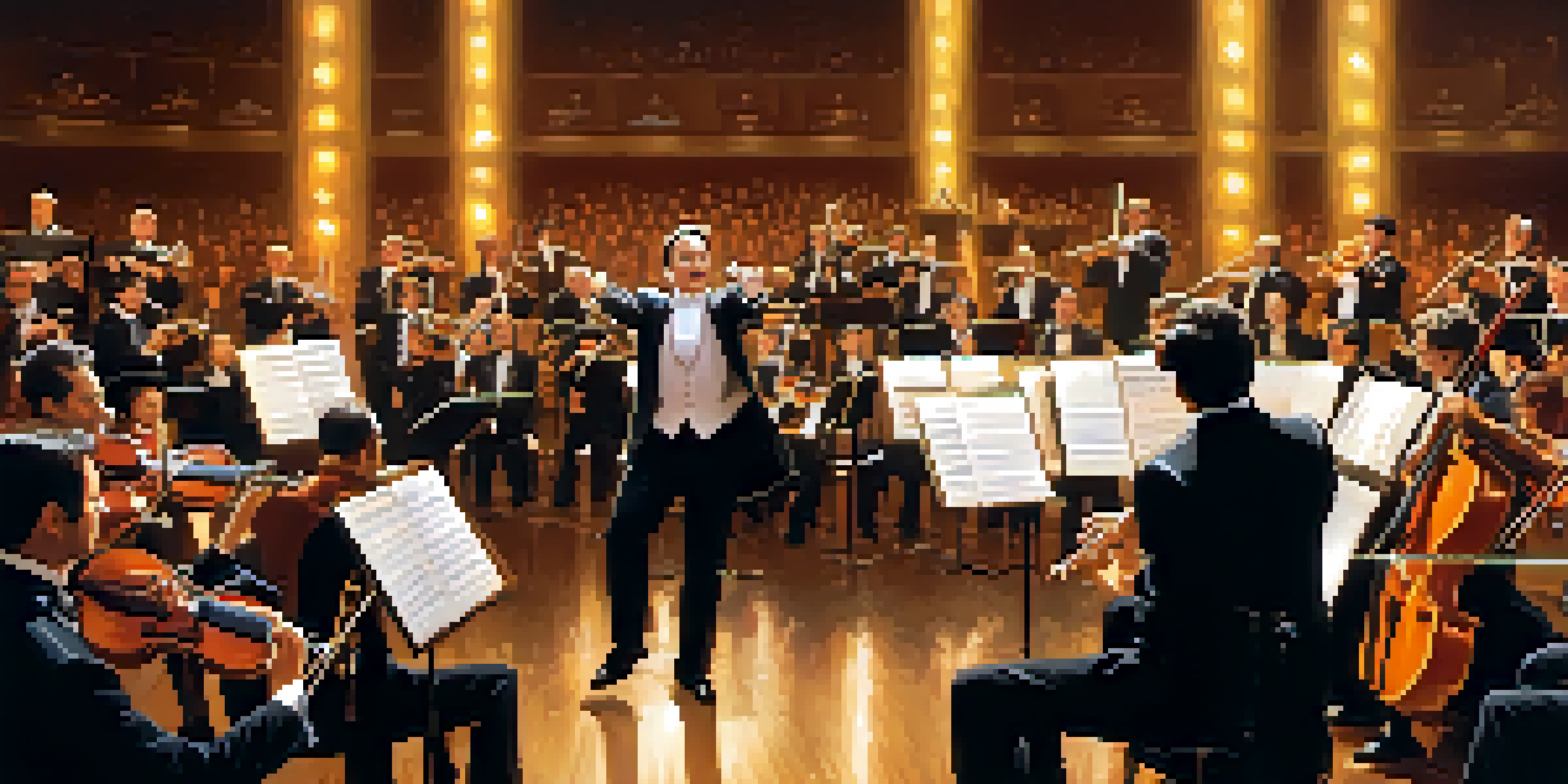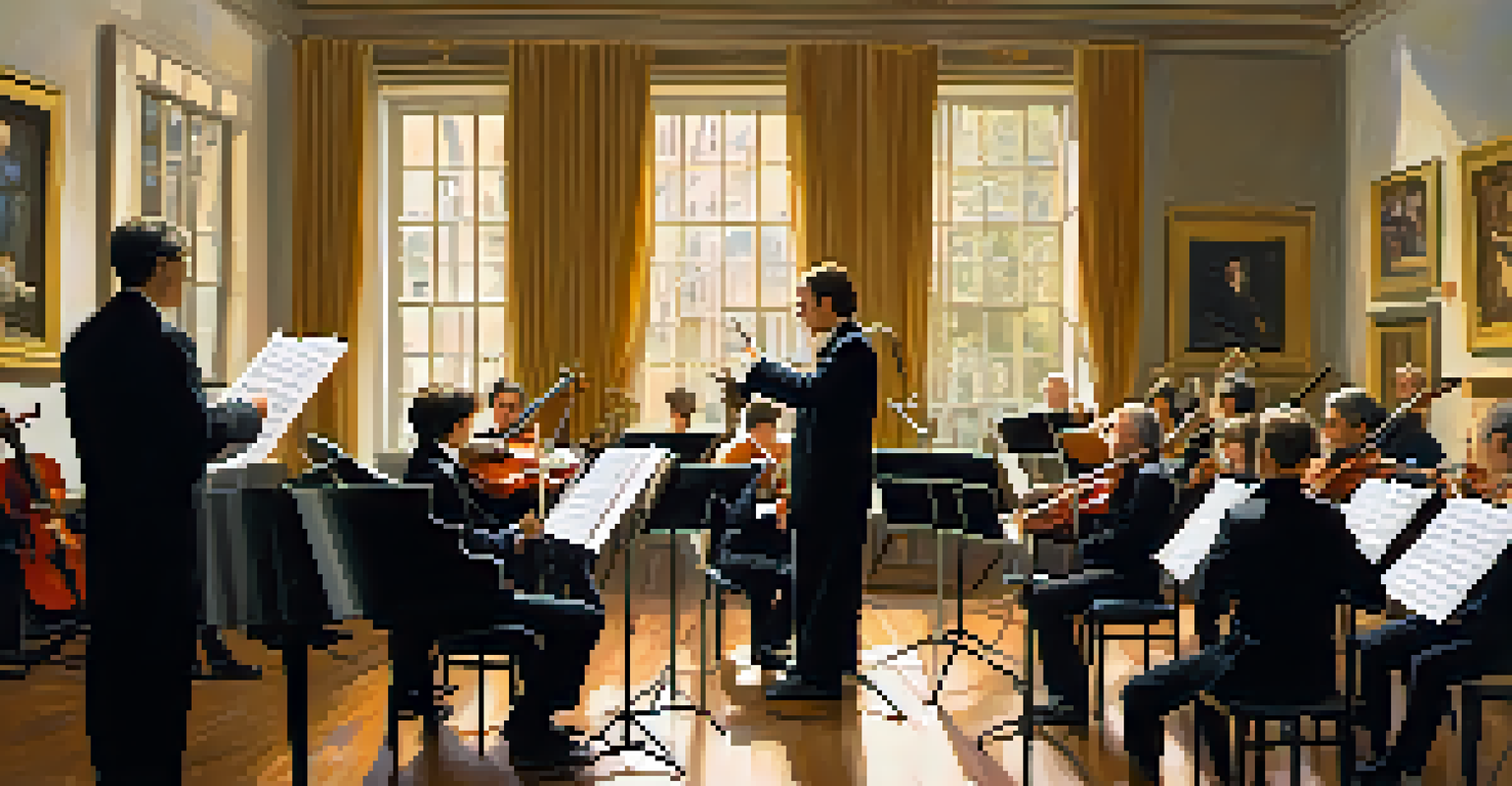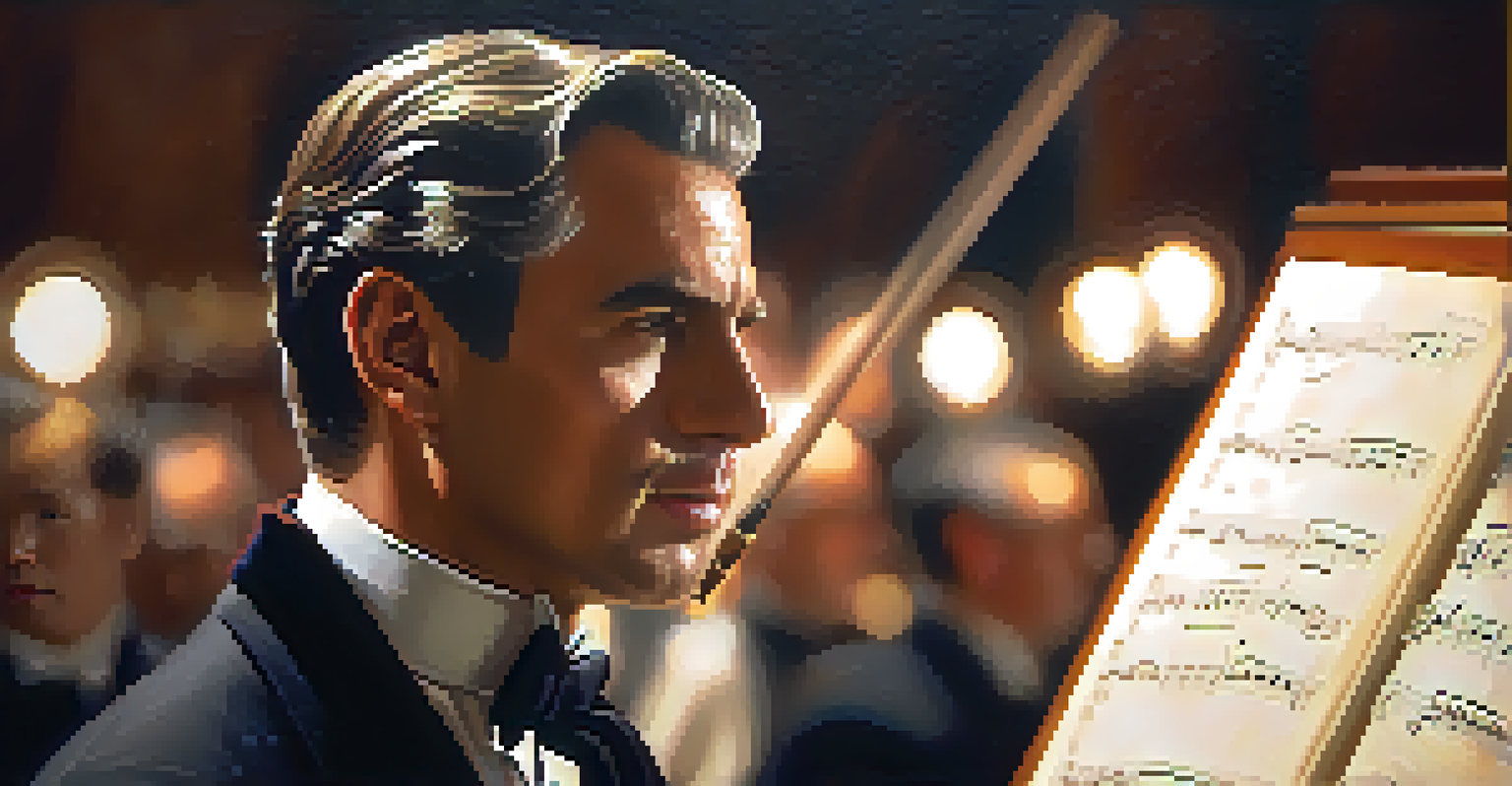Understanding the Role of a Conductor in Music Performance

The Conductor: The Heartbeat of the Orchestra
At the center of any orchestra, the conductor serves as a pivotal figure, akin to a heartbeat that keeps the music alive. They not only lead the musicians but also interpret the score, breathing life into the notes written on the page. Without the conductor, the ensemble might struggle to maintain tempo or unity, much like a team without a coach.
The conductor is a musician who is skilled at both leadership and communication, guiding the orchestra through the complexities of the score.
Conductors are responsible for setting the overall mood and style of the performance. They communicate their vision through gestures, facial expressions, and body language, which helps musicians understand how to interpret the music. Imagine trying to cook a complex recipe without a head chef; it would be chaotic and disjointed without a guiding hand.
Ultimately, the conductor's role is to unify the individual talents of the musicians, transforming their collective effort into a harmonious sound. They act as a bridge between the composer’s intentions and the audience's experience, ensuring that every performance resonates emotionally.
Communication: The Conductor's Primary Tool
Communication is at the core of a conductor's effectiveness. Through precise hand movements and eye contact, they convey critical instructions such as tempo changes, dynamics, and cues for entry. It's similar to a dance; the conductor leads, while the musicians follow, creating a beautiful choreography of sound.

Moreover, a conductor's ability to read the mood of the ensemble and adapt their approach is crucial. If tensions rise during a performance, the conductor can use calming gestures to ease the atmosphere, much like a mediator in a heated discussion. This adaptability not only enhances performance quality but also fosters a positive environment.
Conductors: The Heart of Performance
Conductors unify musicians and interpret the score, ensuring a harmonious and emotionally resonant performance.
Effective communication extends beyond gestures; it involves building relationships with the musicians. A conductor who knows their players’ strengths and weaknesses can tailor their leadership style, encouraging collaboration and trust within the group. This bond helps to create a cohesive performance that captivates the audience.
Mastering the Score: Preparation is Key
Before stepping onto the podium, a conductor must thoroughly master the score. This involves not only understanding the notes but also grasping the historical context and emotional undertones of the piece. It’s akin to a playwright knowing every line and nuance of their script before guiding the actors.
Music is the shorthand of emotion, and the conductor's interpretation brings that emotion to life for the audience.
Preparation also includes analyzing the orchestration and dynamics to ensure that each section blends perfectly. Just as a painter considers color and composition, a conductor must envision how each instrument will contribute to the final sound. This deep dive into the music shapes how they will lead the performance.
By immersing themselves in the score, conductors can anticipate challenges during rehearsals and performances. They are equipped to address potential issues proactively, ensuring the ensemble is ready to shine when the spotlight hits. This level of preparation is what separates a good conductor from a great one.
The Art of Interpretation: Bringing Music to Life
One of the most fascinating aspects of a conductor's role is interpretation. Each conductor brings their unique perspective and emotional insight to a piece, which can significantly affect how it is perceived. Think of them as storytellers, guiding the narrative of the music through their expressive choices.
Interpretation involves making decisions about tempo, dynamics, and phrasing, which can alter the mood and impact of a performance. For instance, a conductor might choose to slow down a particular passage to evoke a sense of longing or urgency. These choices can turn a familiar piece into a fresh experience for the audience.
Communication is Key for Conductors
Effective communication through gestures and relationships fosters collaboration and enhances the overall quality of the performance.
Moreover, a conductor's interpretation often reflects their own experiences and feelings, adding a personal touch to the performance. This connection can resonate with the audience on a deeper level, transforming the concert into an emotional journey. A great conductor knows how to share that journey, making every performance memorable.
Rehearsals: The Conductor's Workshop
Rehearsals serve as the conductor's workshop, where they refine the ensemble's performance. During these sessions, the conductor works closely with musicians to develop their sound and interpretation. It’s similar to sculpting; the conductor chisels away at rough edges, shaping a masterpiece from raw talent.
In rehearsals, the conductor addresses technical challenges, such as timing and intonation, ensuring that the ensemble is well-prepared. They provide feedback and encouragement, fostering a collaborative atmosphere where musicians feel empowered to express themselves. This teamwork is key to achieving a polished performance.
Additionally, rehearsals allow the conductor to experiment with different interpretations, testing how various choices affect the overall sound. This process of trial and error not only enhances the performance but also strengthens the bond between the conductor and musicians. Together, they create something greater than the sum of its parts.
The Conductor's Role During Performance
During a performance, the conductor becomes the focal point, guiding the musicians and connecting with the audience. Their presence on stage is magnetic, drawing attention and unifying the ensemble's efforts. It's like being the captain of a ship, steering the crew through calm and stormy seas alike.
The conductor’s ability to maintain energy and focus is crucial, especially during lengthy performances. They must balance the intensity of the music with the needs of the musicians, ensuring that everyone stays engaged and in sync. This requires not only technical skill but also emotional intelligence.
Preparation Shapes Great Conducting
Thorough preparation of the score allows conductors to anticipate challenges and guide their ensemble to excellence.
As the performance unfolds, the conductor constantly adjusts their approach based on the musicians' responses and the audience's reactions. They are in tune with the ebb and flow of the music, creating a dynamic experience that evolves in real-time. This responsiveness is what transforms a performance into a living, breathing entity.
Concluding Thoughts: The Impact of a Conductor
In summary, the conductor plays a vital role in the world of music performance, serving as a leader, communicator, and interpreter. Their influence extends far beyond the podium, shaping the experience for both musicians and audiences alike. Just as a lighthouse guides ships to safety, a conductor illuminates the path for musicians, helping them navigate the complexities of a performance.
The impact of a conductor can be profound; a skilled conductor can elevate a good performance into a memorable one. They inspire musicians to reach new heights, creating a synergy that resonates with the audience. The result is a shared experience that lingers long after the final note has faded.

Ultimately, understanding the conductor's role helps us appreciate the artistry behind every performance. The next time you listen to an orchestra, take a moment to observe the conductor and consider the intricate dance of collaboration that unfolds on stage. You'll find that the conductor is not just leading; they are crafting a musical journey that connects us all.